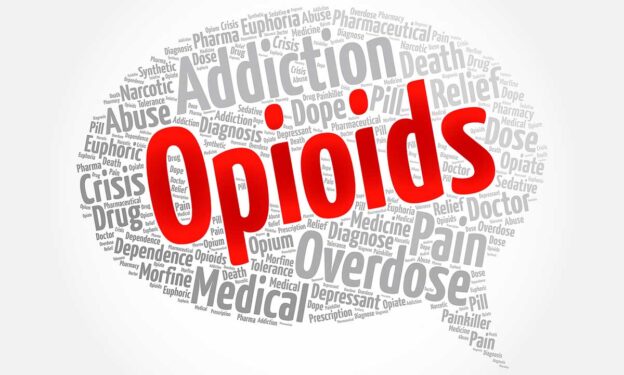Throughout the United States and other countries, opioids are a growing issue that has sparked many questions. With understanding limited due to the complex nature of opioid addiction, there is a real need for further information on this subject.
To truly understand what opioids are and their effects, it is important to answer some key questions regarding this epidemic. In this blog post, we will be exploring the ten most frequently asked questions surrounding opioids – from how they work in our bodies to why they can be so addictive – in order to gain insight into this ever-growing issue. We hope that by providing answers to these common queries, you will not only become better informed but also better equipped to tackle opioid addiction in your own home or community.
Here are the 7 most common questions about opioids and their best answers based on information from reputable sources such as the Centers for Disease Control and Prevention (CDC) and the National Institute on Drug Abuse (NIDA):
1. What is an opioid?
Opioids are a class of pharmacological agents that act as agonists on opioid receptors in the central nervous system and other tissues, effectively blocking the transmission of pain signals. This class of drugs encompasses a wide range of compounds, including natural derivatives from the opium poppy plant and synthetic analogues developed in the laboratory. Some common examples of opioid drugs include codeine, morphine, fentanyl, oxycodone, and hydrocodone, which are commonly used to alleviate acute and chronic pain conditions. However, their use is not without risk, as chronic exposure to opioids can result in physical dependence, as well as adverse effects such as drowsiness, nausea, respiratory depression, and in severe cases, overdose.
For over 25 years, people from all over the world have chosen Waismann Method as their opioid detox provider.
We know the challenges you face and the importance of creating a unique and personal experience for you right from the start.Call for Detox Options 1-800-423-2482
2. What are the side effects of opioids?
Common side effects of opioids include drowsiness, nausea, dizziness, constipation, and headache. These side effects are sometimes mild and go away with time, but in many cases, they may be more severe or long-lasting. It’s also important to be aware of potential respiratory depression, which can occur when taking high doses of opioids and lead to slowed breathing and decreased oxygen levels in the body.
Additionally, long-term use of opioids can lead to physical dependence, which leads you to experience withdrawal symptoms if you suddenly reduce your dosage or stop taking the drug. If you have concerns about your opioid use, you must speak with your healthcare provider immediately.
3. Is it safe to use opioids for pain relief?
As a healthcare professional, it’s important to consider the potential risks and benefits of any medication, including opioids, when used for pain relief. While opioids can effectively relieve pain, they can also have significant side effects and carry a risk of addiction and overdose.
Therefore, it’s essential to use opioids only under the close supervision of a licensed healthcare provider and in conjunction with other pain management strategies. Additionally, it’s crucial to monitor for signs of opioid use disorder and to use the lowest effective dose for the shortest duration necessary to control pain.
While opioids can provide pain relief, they must be used cautiously and under medical supervision to minimize the risks associated with their use.
4. What is meant by the term “opioid tolerance”?
Opioid tolerance refers to the phenomenon in which an individual’s physiological response to a certain dose of opioids decreases over time, necessitating an increase in dose to achieve the same level of pain relief or euphoria. This can occur as a result of prolonged exposure to opioids and is a major factor in the development of opioid addiction and overdose.
It is important for healthcare providers to closely monitor patients taking opioids for pain management and adjust the dosing accordingly to minimize the risk of tolerance and other adverse effects.
5. What is opioid dependence?
Opioid dependence is a condition where someone has become so accustomed to taking opioids, such as heroin and prescription painkillers, that they have begun to rely on them in order to function. People with opioid dependency may experience withdrawal symptoms when not using the drugs, including nausea and vomiting, restlessness, fatigue, insomnia, and increased pain sensitivity.
Once an individual has been identified as suffering from opioid dependence, treatments are available to assist them in reducing or eliminating their drug use. Common treatments include medically assisted detoxification, rapid detox, and outpatient titration methods.
It is important to recognize the early signs of opioid dependence as seeking help quickly can greatly reduce the difficulty of recovery.
6. Is Tramadol an opioid?
Tramadol is a prescription pain relief medication that has become a highly contentious topic as people debate whether it is an opioid or not. In order to attempt to answer this question, it is first necessary to ask: what is an opioid? An opioid is a class of drugs that interacts with the body’s opioid receptors for pain relief and includes powerful drugs such as morphine, fentanyl, and oxycodone.
So, does Tramadol meet the criteria for being classified as an opioid? The answer from most medical experts is yes; Tramadol acts in a similar manner to other opioids, though it does have fewer side effects than more potent opioids due to its weaker active ingredients. This means it can offer adequate pain relief for some individuals without exposing them to certain risks associated with more potent medications.
Ultimately, the decision about whether an individual should use Tramadol comes down to careful consideration with your doctor, based on their assessment of you and your medical needs.
7. What is the risk of overdose with opioids?
It is crucial to be aware of the potential risks associated with the use of both prescription and illicit opioids. One of the most significant risks is the possibility of overdose.
An opioid overdose occurs when an individual uses a dose of the medication that is too much for their body to handle, leading to life-threatening symptoms such as respiratory depression, unconsciousness, and in severe cases, death. Whether an opioid is prescribed or obtained through illicit means, the risk of overdose remains high, and it is essential to be mindful of the symptoms and to seek immediate medical attention if they occur.
When taking prescription opioids, it is crucial to follow the instructions of a licensed healthcare provider closely and to never exceed the recommended dose. On the other hand, using illicit opioids, such as heroin, can be especially dangerous, as the potency and purity of these drugs can vary widely, making it difficult to determine the appropriate dose and increasing the risk of overdose.
Conclusion
Both prescription and illicit opioids carry a significant risk of overdose, and it is essential to use them with caution and under medical supervision to minimize the risks associated with their use. By being mindful of the symptoms of an overdose and seeking immediate medical attention if they occur, patients can help minimize their risk of experiencing a potentially life-threatening event.
Sources:
- National Institute on Drug Abuse: Opioids
- U.S. Food & Drug Administration: Opioid Medications
- CDC: Provisional Drug Overdose Death Counts
- CDC: Preventing Opioid Overdose
This article, authored and reviewed by Clare Waismann, M-RAS, SUDCC II, Founder of Waismann Method Advanced Treatment for Opiate Dependence, is for informational purposes only and should not be considered medical advice or a recommendation. Consult a healthcare professional for guidance and treatment options. While we strive to maintain high editorial standards, please be aware that information may become outdated. Waismann Method, its employees, agents, and associated individuals are not liable for any errors, omissions, or consequences resulting from the use of the information provided.






